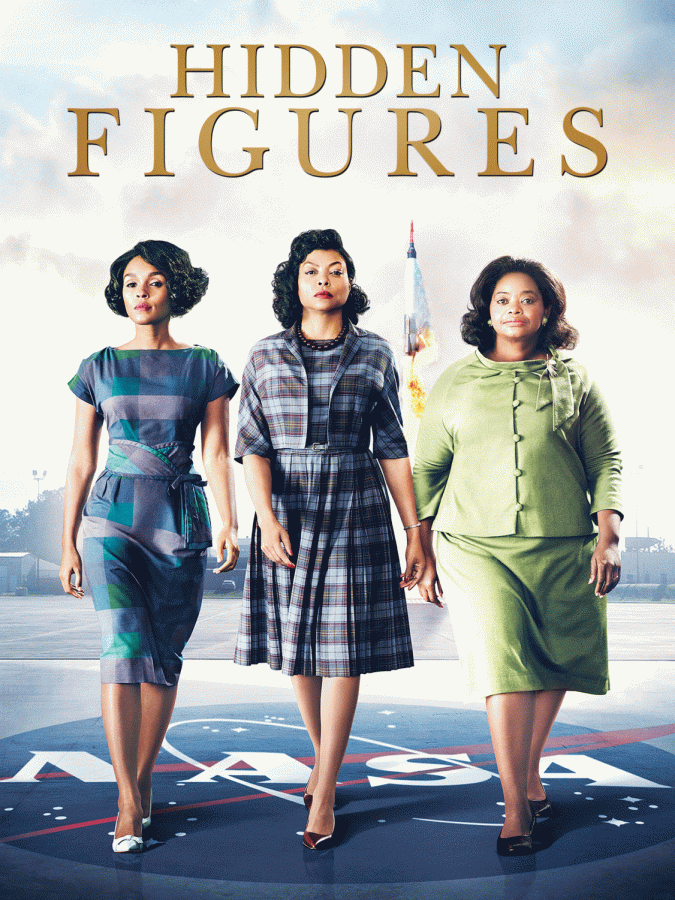Culturally Revealing Hidden Figures
Fraught with suspense, romance and emotion, Hidden Figures is based on the true story of three brilliant women working at NASA during the Space Race; Katherine Johnson (Taraji P. Henson), Dorothy Vaughan (Octavia Spencer) and Mary Jackson (Janelle Monáe). The film draws you in through every twist, turn and troublesome event these heroine figures face, and leaves the viewer satisfied, while simultaneously unsettled. Since its release in 2016, it has been nominated for numerous SAG Awards, Oscars and Golden Globes and has become widely popular and critically acclaimed. Despite this, like any work, it does have its critics.
At the screening on Friday, April 6 in Golden Auditorium, most attendees were seeing the movie for the first time.
Before the film, sophomore Madison Jozefiak communicated her anticipation, “It seems like a really interesting story because I had never heard about the women who were involved in NASA, so I felt like it was something missing from my knowledge,” Jozefiak said.
The film shows how intersectionality affected the lives of female minorities during segregation, and the incredible strength it took for these women to receive their deserved recognition. To receive the title of supervisor, engineer or even to just be properly addressed as Mrs. Vaughan, rather than Dorothy, by a white colleague took immense poise, intelligence and determination in a world run mostly by racist, sexist white men.
“I really appreciated [the women’s] persistence and how they all faced their own difficulties in different ways, but they all shared that group dynamic of trying to overcome this problem,” sophomore Hannah Spotts said.
The tumultuous journey of struggle and achievement coupled with overlays of romantic storylines and the upbeat, funky soundtrack came together to create a truly electrifying film.
Set in a time where racial tensions were higher than they are now, Hidden Figures begs the question; how far have we really come? While legal segregation is long gone and race and gender diversity has dramatically increased at organizations such as NASA, stereotypes and prejudices still permeate American society. Throughout the movie, negative comments regarding women in science and engineering fields feel eerily familiar, as is the image of administrations dominated by white men.
One heavily criticized aspect of the film is the inclusion of Al Harrison, who is the director of the Space Task Group and an entirely fictional character unlike the women, who are based on real people. Throughout the movie, he acts as an ally to all of the women, especially Katherine, and a general proponent of feminism and racial equality. However, he plays the part of a white savior. In cinema, a white savior narrative is one where a white character rescues people of color from their plight. Critics wonder whether or not that character is beneficial to a movie like Hidden Figures, which encourages empowerment for women and people of color.
“I was curious about the dynamic of the white savior. I think that made me critical of [the narrative]. However, my favorite part of the movie was Katherine’s strong headedness and the solidarity in the movie,” sophomore Cecilia Kane said.
While his character may undermine the movie’s message, the story still remains engaging and inspiring.
Hidden Figures will have you on the edge of your seat, fully invested in the story and chuckling from time to time. It does a masterful job of bringing issues of race and gender to light through an exceptional story from the 1960s. It definitely merits two hours of anyone’s time, especially in the social and political environment of today’s America.
Contact Abby Blair at ablair@colgate.edu.







